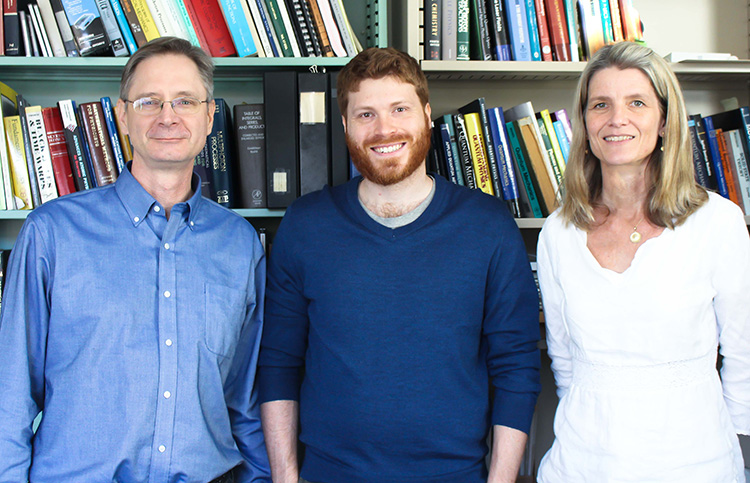Controlling Fast X-ray Pulses with Laser Light
FOR IMMEDIATE RELEASE
March 21, 2017
BATON ROUGE – When hit by light, electrons are excited and begin to move. Ultrafast x-ray pulses may make it possible to watch the motion of these electrons as they move inside and between atoms in a material. Although scientists have gotten much better at making ultrafast x-rays in recent years, controlling them is still notoriously difficult.
 Researchers at LSU and Lund University in Sweden have demonstrated a new method to
direct short bursts of x-ray light that uses strong laser pulses.
Researchers at LSU and Lund University in Sweden have demonstrated a new method to
direct short bursts of x-ray light that uses strong laser pulses.
“This work is really the culmination of years of studies by the strong field laser physics team -- how to use lasers to both make and control x-rays,” said Professor Kenneth Schafer, who leads the research team in the LSU Department of Physics & Astronomy.
The new method, reported today in the journal Nature Photonics, works by using pulses of infrared laser light to transform the way that matter interacts with x-rays. In this work, the researchers at Lund University and LSU have used laser pulses to change a gas of atoms so that rather than absorbing the x-ray light along one direction, the atoms are instead stimulated to emit x-ray light along a completely different direction, and at a time that the scientists can control.
“This makes it possible for us to control the properties of the light, for instance change the direction, change the pulse duration, split the light or focus it,” said Johan Mauritsson, leader of the Lund University team that carried out the experiments demonstrating the new effect.
LSU graduate student Seth Camp conducted the large-scale calculations for direct comparison with the experiments. He is supervised by Schafer and LSU Department of Physics & Astronomy Professor Mette Gaarde.
“It was exciting for me as a theorist to see such a close connection between the calculations we are doing and the experiments in the lab,” Camp said.
The work at LSU was supported by the U.S. Department of Energy, Office of Science.
Additional Links:
“Space-time control of free-induction decay in the extreme ultraviolet,” Nature Photonics, S. Bengtsson, E. W. Larsen, D. Kroon, S. Camp, M. Miranda, C. L. Arnold, A. L’Huillier, K. J. Schafer, M. B. Gaarde, L. Rippe and J. Mauritsson.
LSU has a video uplink studio with live broadcast capabilities. Contact us to set up an interview.
-30-
Contact Mimi LaValle
LSU Department of Physics & Astronomy
225-439-5633
mlavall@lsu.edu
Alison Satake
LSU Media Relations
225-578-3870
More news and information can be found on LSU’s media center, www.lsu.edu/mediacenter.